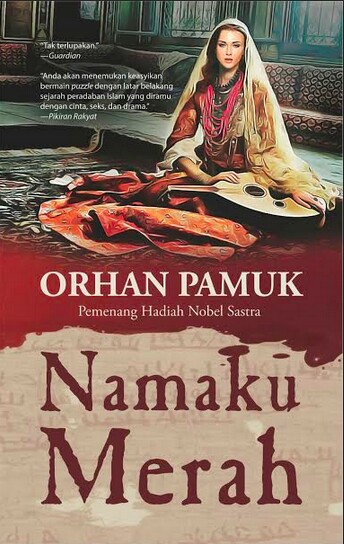

When drawings or props speak, they offer new angles on their owners so everyone is seen inside and out, even if they’re alone. There’s something cinematic about this: I imagine a camera moving around a room, changing views, zooming in, then panning out. There are particularly brilliant moments when the perspective shifts within a scene to allow multiple characters to comment in the moment rather than through retrospectives. The language/tone is regulated so that even reading the perspective of the murdered man and the murderer isn’t enough for a reader to sniff out the guilty party.

Chapters are titled “I Am a Corpse,” “I Am Called Black,” “I Am a Dog,” “I Will Be Called a Murderer,” and so on. The story is told from a rotating set of perspectives that includes a corpse, dog, gold coin, and various illustrations. There are scenes in this book that don’t require outside knowledge to appreciate. Part fantasy and part philosophical puzzle, My Name Is Red is a kaleidoscope journey into the intersection of art, religion, love, sex, and power. And when one of the chosen miniaturists disappears, the only clue to the mystery lies in the half-finished illuminations themselves. But because figurative art can be deemed an affront to Islam, this commission is a dangerous proposition indeed. Their task: to illuminate the work in the European style. The Sultan has commissioned a cadre of the most acclaimed artists in the land to create a great book celebrating the glories of his realm. In all cases, something was familiar, but I was miles away.Īt once a fiendishly devious mystery, a beguiling love story, and a brilliant symposium on the power of art, My Name Is Red is a transporting tale set amid the splendor and religious intrigue of sixteenth-century Istanbul. But instead of squinting at signs, I was scratching my head at Pamuk’s mythical, artistic, and philosophical diversions.

I’ve read books set in unfamiliar cultures before, but My Name Is Red feels truly foreign and reminiscent of that moment in Istanbul when I realized Turkish is a tricky language.

I thought my knowledge of history, memories of Istanbul, and hours spent copying/painting manuscripts would give me a leg up. I disregarded the reviews which suggested this is not the ‘best’ place to start with Pamuk. I started with My Name Is Red because its focus on illuminated manuscripts appealed to me. Orhan Pamuk has been on my list of writers to sample for a while.


 0 kommentar(er)
0 kommentar(er)
